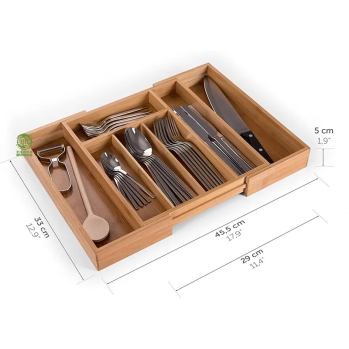5 Mistakes People Make When Buying Their First Bamboo Products
After reading about how bamboo products can upgrade your kitchen or change your daily routine, many people get excited and rush to buy their first bamboo items. That enthusiasm is great, but it often leads to purchases that disappoint. Having helped countless people transition to bamboo products, I've noticed the same mistakes happening repeatedly. Here's what to avoid so your first bamboo purchase becomes the start of a positive change rather than a regret.
Mistake 1: Choosing Based Only on Price
The cheapest bamboo cutting board or utensil set might seem like a smart way to test the waters, but it's honestly the fastest way to end up disappointed. Low-quality bamboo products can be rough, splinter easily, or fall apart quickly – giving you a terrible first impression of what good bamboo should be.
Quality bamboo products do cost more than plastic alternatives, but as we discussed in previous articles about bamboo versus plastic, the longevity makes them better value. A $30 bamboo cutting board that lasts seven years beats a $10 one that disappoints you within months and makes you give up on bamboo entirely. Start with one quality piece rather than several cheap items.
Mistake 2: Buying Everything at Once
I see this all the time – someone gets excited about bamboo products and immediately orders a complete kitchen set. Then they realize they don't actually need some items, or they discover they prefer certain products in different materials for specific tasks.
Remember how switching to bamboo changed daily routines gradually? That same gradual approach works better for purchasing too. Start with the item you'll use most – probably a cutting board or utensil set. Live with it for a few weeks. See how you like caring for bamboo and using it daily. Then add more items based on what actually improves your routine, not what looks nice in the product photos.
Mistake 3: Ignoring the Maintenance Requirements
Bamboo products require different care than plastic items. They need hand washing and proper drying, not dishwasher cycles. Some people buy bamboo products without understanding this, get frustrated with the care routine, and abandon their bamboo items for plastic convenience.
Before purchasing, honestly assess whether you're willing to hand wash and properly dry bamboo items. If you're not ready for that small extra step, bamboo products will frustrate rather than please you. The good news is that maintenance is simpler than most people expect – we've covered this in detail before – but you need to commit to it from the start.
Mistake 4: Not Checking the Finish and Processing
Not all bamboo products use the same processing methods. Some bamboo items receive protective coatings that enhance durability, while others remain more natural. Carbonized bamboo looks darker but is softer than natural bamboo. Understanding these differences helps you choose products that match your actual needs.
When shopping, look for information about how the bamboo was processed. Was it properly treated? Does it have a protective finish? Quality manufacturers provide this information because they're proud of their processing methods. If product descriptions don't mention processing or finishing, that's often a red flag about quality.
Mistake 5: Expecting Bamboo to Work Like Plastic
Bamboo products perform differently than plastic, and that's actually the point. A bamboo cutting board feels heavier and more substantial than plastic. Bamboo utensils have different flexibility. These differences are features, not flaws, but they surprise people who expect bamboo to behave exactly like the plastic items they're replacing.
Give yourself time to adjust to how bamboo products feel and perform. That solid weight of a bamboo cutting board that seems different at first becomes reassuring once you're used to it. The slight learning curve is worth it for the benefits we've discussed in previous articles – better hygiene, longer lifespan, and more pleasant daily use.
Getting Your First Purchase Right
So what should you actually buy first? Based on what creates the most positive first impressions, I recommend starting with a medium-sized bamboo cutting board from a reputable manufacturer. It's something you'll use frequently, the quality differences are immediately noticeable, and proper care is straightforward.
Look for boards that feel smooth and solid, with no rough spots or gaps in the lamination. The bamboo should be properly sealed but not excessively coated. If possible, check reviews specifically about durability and how the board holds up after months of use, not just initial impressions.
Building Your Bamboo Collection Wisely
Once you're comfortable with your first bamboo purchase, expand thoughtfully. Add items that genuinely improve your routine rather than completing a matching set for appearances. Many people find that bamboo serving pieces are an excellent second purchase because they're used frequently and create those positive mealtime experiences we talked about earlier.
Kitchen utensils make another good early addition, especially if you cook regularly. The improved feel and performance of bamboo spatulas and spoons become apparent quickly, reinforcing your positive experience with bamboo products.
Learning from Others' Experiences
Connect with the community of people using bamboo products. Online reviews and social media groups provide honest feedback about which products deliver on their promises. Real users share practical insights about durability, maintenance, and performance that marketing materials don't mention.
Pay attention to reviews that discuss long-term use, not just initial impressions. A product that seems great for a week might show issues after a month. Look for feedback from people who've used items for at least three to six months to understand real-world performance.
When to Stick with Alternatives
Bamboo isn't always the best choice for every application. Some tools genuinely work better in other materials for specific tasks. Being realistic about this prevents disappointment and helps you build a kitchen with the right tool for each job.
For example, while bamboo works wonderfully for most kitchen tasks, certain specialized applications might be better served by other materials. Understanding what bamboo does best – and what it doesn't – helps you make smart choices that you'll be happy with long-term.
Your first bamboo purchase sets the tone for your entire experience with these products. Avoid these common mistakes, start with quality items, and give yourself time to adjust. When you approach bamboo products thoughtfully rather than impulsively, you set yourself up for the kind of positive daily changes that make the switch worthwhile. Remember, this isn't about perfection – it's about making gradual improvements that enhance your daily life.







